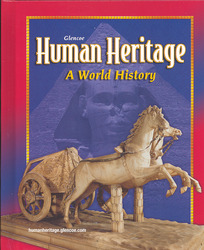Human Heritage: A World HistoryChapter 33:
Rise of IndustryWeb Activity Lesson Plans“Inventors of the Industrial Revolution”Introduction
Students have read about the Industrial Revolution and the many inventions introduced during that period. In this exercise, students will examine the reasons people wanted to invent new ways of doing things, the inventions created, and the people who created them. Lesson Description
Students will use information from the Inventors of the Industrial Revolution Web site to learn more about inventors and inventions of the Industrial Revolution. Students will then answer four questions and apply this information by writing an essay about how new communication technology has changed society. Instruction Objectives
- Students will characterize circumstances and events of the Industrial Revolution.
- Students will identify inventors and the inventions of the Industrial Revolution.
- Students will use this knowledge to write an essay describing how new communication technology has changed American society.
Student Web Activity Answers
- Viscount Charles Townshend found the secret way to rotate crops. This was done by planting a different crop each year. While wheat or corn would wear out the land, turnips or clover would restore the field.
- Steam engines offered a way to power machinery without relying on water power. Not all factories could be located near a source of water to run the machines.
- Eli Whitney invented interchangeable parts. This was a way of standardizing parts of a machine so that they could easily be replaced.
- The Daguerreotype, a metal plate coated with silver iodide, was exposed to light through a small hole in the camera. The plate was then removed and treated with mercury fumes. Later the plate was washed and treated with table salt to prevent fading.
- Students' essays will vary.
 | 




